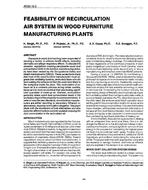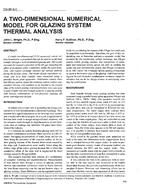Click here to purchase
The recognition of the determinant role of occupants in building energy consumption has catalyzed the increasing research activities on occupancy-centric controls (OCCs) for building operations. This paper evaluates the monetary savings of the occupancy-centric heating, ventilation, and air-conditioning (HVAC) controls in four types of commercial buildings, i.e., medium office, large office, hotel, and secondary school. A parametric EnergyPlus simulations were conducted to calculate the energy savings from the occupancy-centric HVAC controls in different climate zones, based on assumptions on occupancy. The data of energy price, labor price, sensor cost, and parameters for the life-cycle cost analysis (LCCA) are collected from various validated sources such as the U.S. Energy Information Administration (EIA) and Bureau of Labor Statistics (BLS), to support the economic analysis. Three evaluation metrics, i.e., net savings (NS), savings-to-investment ratio (SIR), and discounted payback period (DPB), are selected to assess the economic performance. The results suggest that based on the current sensor price and assumptions of occupancy schedules, the typical DPB is longer than 10 years (i.e., the typical lifespan of a sensing system) in half of the representative cities for the medium office, and in nearly all representative cities for the large office building. This indicates that the investments on sensor systems are not likely to be covered by the long-term energy cost savings in such office building type. Nevertheless, the large hotel and primary school buildings are good candidates for occupancy sensors: the large hotel could achieve a DPB shorter than two years for all scenarios, while the primary school could achieve a DPB shorter than five years for most of the representative cities.
Product Details
- Published:
- 2022
- Number of Pages:
- 9
- Units of Measure:
- Dual
- File Size:
- 1 file , 2.5 MB
- Product Code(s):
- D-TO-22-C062
- Note:
- This product is unavailable in Russia, Belarus


